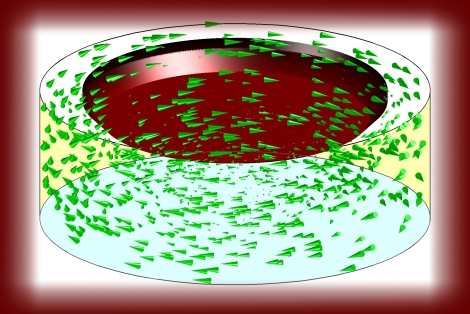VVPF 1.0
RHEOLOGY OF PARTICLE SUSPENSIONS - Fresh Concrete, Mortar and Cement Paste with Various Types of Lignosulfonates
Download:
http://www.diva-portal.org/ntnu/theses/abstract.xsql?dbid=319 (in PDF format)
Theme:
Viscometric-ViscoPlastic-Flow 1.0 is actually two different programs. The first one (vvpf10_ct34) solves the flow of viscoplastic material inside the ConTec BML Viscometer 3 (see Figure 8.15, page 197) and ConTec Viscometer 4 (see Figure 9.5, page 217), both for steady state and transient cases. The second software (vvpf10_c3p2) calculates the flow of a viscoplastic material inside a modified cone viscometer, called C3P2 (see Figure 10.30, page 264). For the latter software, only steady state cases are calculated.
- Chapter 7 - Computational Rheology: Gives an introduction to the finite difference method. It is used in VVPF for solving the governing equation. Calculation of shear rate is treated here. Consistency and iteration scheme are also treated in this chapter.
- Chapter 8 - Simulation of the ConTec Viscometers: The setup of the auxiliary (boundary and initial) conditions used for the ConTec viscometers. Other issues like convergence and stability are also discussed in Chapter 8.
- Chapter 9 - Thixotropic Explorations: Example of how VVPF 1.0 can be used.
- Section 10.3.7 - The C3P2-Geometry: The treatment and implementation of a new geometry for the ConTec viscometers.
- Appendix A - Source Code: Here the source code is shown. This code can also be downloaded in the download section.

The above figure is from page 264 (Figure 10.30). It shows the velocity profile inside a modified cone viscometer. For this figure, a Bingham fluid is applied with yield value and plastic viscosity of 200 Pa and 20 Pa.s, respectively. The top red region is the measuring unit and is stationary, while the rest of the boundary consist of a rotating bucket (here, rotating at 3 rad/s).
BIBLIOGRAPHY
- Wallevik, J. E., Minimizing end-effects in the coaxial cylinders viscometer: Viscoplastic flow inside the ConTec BML Viscometer 3. J. Non-Newtonian Fluid Mech. 155 (2008) 116-123.
- Wallevik, J. E., Thixotropic investigation on cement paste: Experimental and numerical approach. J. Non-Newtonian Fluid Mech. 132 (2005) 86-99.
- Wallevik, J. E. (2004); Microstructure-Rheology: Thixotropy and Workability Loss; Nordic Concrete Research, Publication No. 31, The Nordic Concrete Federation 1/2004, Norsk Betongforening, Oslo, Norway.
- Wallevik, J. E. (2003); Rheology of Particle Suspensions - Fresh Concrete, Mortar and Cement Paste with Various Types of Lignosulfonates (Ph.D.-thesis); Department of Structural Engineering, The Norwegian University of Science and Technology. ISBN 82-471-5566-4; ISSN 0809-103X.